5901 Botham Jean Blvd, Dallas, TX 75215
Scrap Metal Recycling Facility: Process, Benefits, and Economic Impact
September 28, 2025A scrap metal recycling facility is a specialized industrial site where used metal materials are collected, processed, and transformed into valuable resources. These facilities are critical in the circular economy, converting potential waste into raw materials for manufacturing new products.
When metals reach the end of their useful life, they don’t lose their inherent properties. Recycling facilities capitalize on this, typically involving the sorting, shredding, melting, and purifying of various types of metals to prepare them for reuse.
These operations are designed to manage everything from aluminum cans to structural steel beams. Modern facilities use advanced technologies to efficiently separate different metal types, creating a sustainable supply chain that reduces the need for virgin ore extraction.
How Does the Scrap Metal Recycling Process Work?
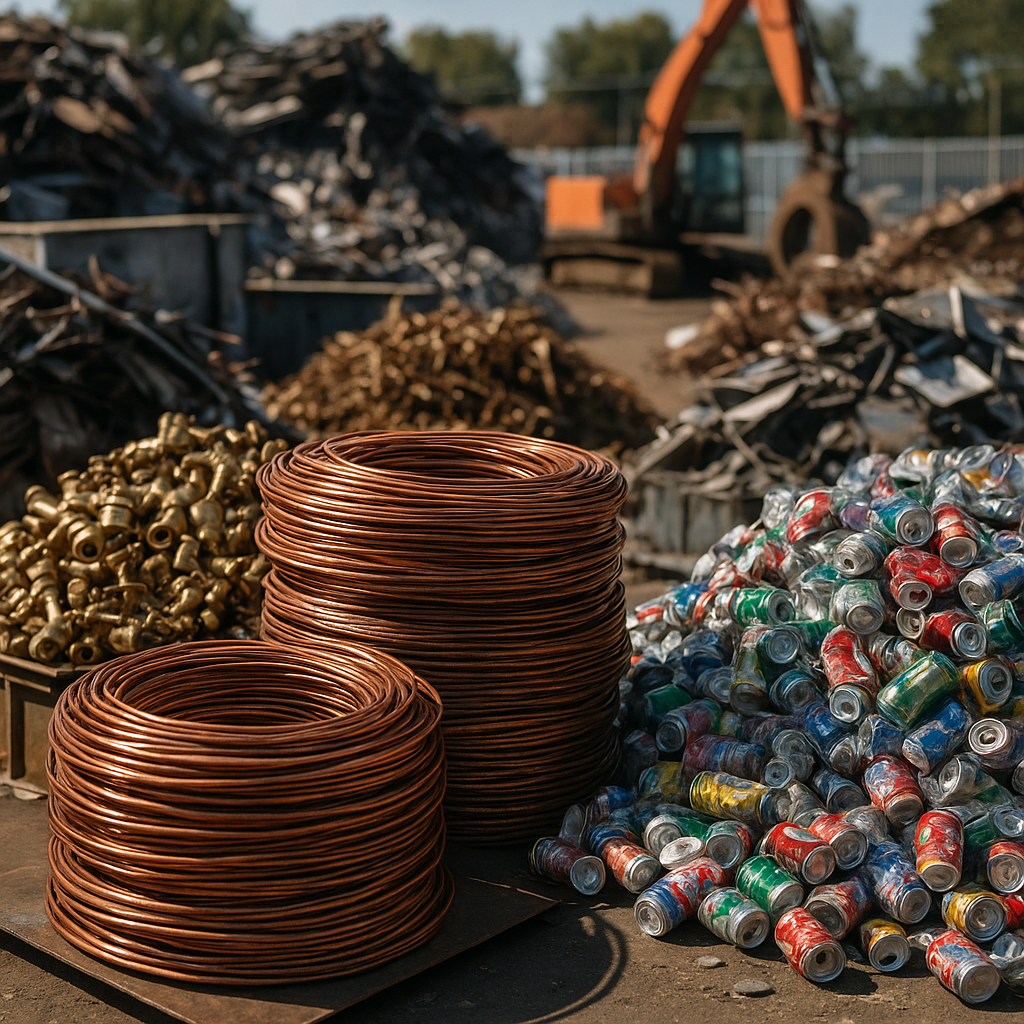
The scrap metal recycling process transforms discarded metal into valuable resources through a series of specialized steps. Each phase plays a crucial role in ensuring metals maintain their integrity and can be reused indefinitely. This closed-loop system stands as one of the most efficient forms of recycling in the waste management industry.
Collection: The Journey Begins
The recycling process starts with the collection from various sources. Scrap metal primarily comes from end-of-life vehicles, manufacturing waste, construction debris, and household items. Unlike other materials that end up in landfills, metal holds inherent value that makes it worth collecting.
Businesses, individuals, and dedicated scrap collectors bring their materials to recycling facilities. Some larger recycling operations even offer transportation services for substantial quantities of scrap metal, enhancing efficiency for industrial clients.
Sorting: Separating Metal Types
Once collected, metals must be accurately sorted by type. This critical step ensures the final recycled product meets quality standards for manufacturing. Modern facilities use a combination of manual inspection and advanced technology to sort metals effectively.
Magnets separate ferrous metals (those containing iron) from non-ferrous metals. Further sorting uses technologies like infrared scanners, x-ray systems, and eddy current separators, identifying different metal types based on their unique properties, color, weight, and density.
Processing and Shredding
After sorting, the metal undergoes processing to prepare it for melting. Hydraulic machinery compacts larger pieces and cuts them into smaller, more manageable sizes, reducing volume and making transportation more efficient.
The material then passes through powerful shredders and hammer mills that break it down into even smaller fragments. This step increases the surface-to-volume ratio, significantly enhancing melting efficiency. The smaller the pieces, the less energy required in the melting phase.
Melting: Transformation Begins
The shredded metal enters specialized furnaces calibrated to specific metal types. Different metals require different temperatures to reach their melting points. Steel, aluminum, copper, and other metals each have their own dedicated furnaces to prevent cross-contamination.
The melting process can take anywhere from minutes to hours, depending on the metal type, volume, and furnace capacity. While this stage requires energy, it consumes far less than extracting and refining virgin metal from raw ore.
Purification: Ensuring Quality
Purification removes impurities and contaminants from the molten metal. One common method is electrolysis, where an electric current passes through the liquefied metal. Pure metal deposits at the cathode, while impurities separate out.
For some metals, other purification methods may be employed, but the goal remains the same: to produce recycled metal that matches or exceeds the quality standards of virgin material. This step is essential for maintaining the integrity of the final product.
Solidification: Creating Usable Forms
After purification, the molten metal moves along conveyor systems to cooling chambers where it solidifies. The metal is typically formed into standardized shapes like bars, sheets, or ingots that manufacturers can easily use.
During this phase, specific chemicals or alloys might be added to create desired properties for particular applications. This customization makes the recycled metal suitable for various manufacturing needs.
Transportation to Manufacturers
The final stage in the recycling process involves transporting the processed metal to manufacturing facilities. These manufacturers use the recycled material to create new products, completing the circular economy of metal recycling.
The new products eventually reach the end of their useful life, and the recycling process begins again. This cycle can continue indefinitely without degrading the metal’s properties, making metal recycling one of the most sustainable practices in waste management.
The scrap metal recycling process highlights how modern recycling technology efficiently recovers valuable materials while significantly reducing environmental impact. By keeping metals in circulation, we conserve natural resources, reduce energy consumption, and minimize waste sent to landfills.
What Types of Metals are Processed at These Facilities?
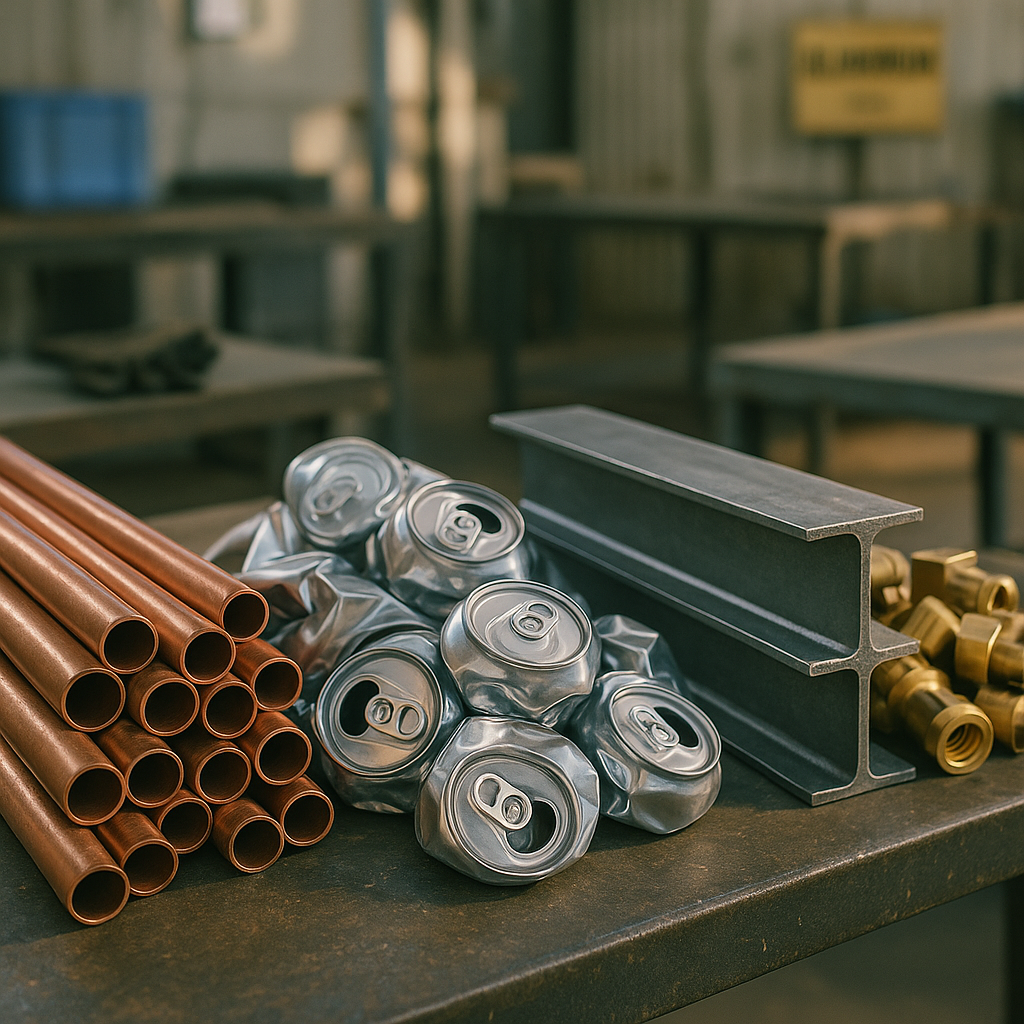
Scrap metal recycling facilities process two main categories of metals: ferrous and non-ferrous. This distinction determines how materials are sorted, processed, and valued throughout the recycling process.
Ferrous Metals
Ferrous metals contain iron, making them magnetic and more susceptible to rust when exposed to oxygen. These metals account for the largest volume of scrap processed worldwide but usually fetch lower prices per pound than their non-ferrous counterparts.
Common ferrous metals processed at recycling facilities include steel, cast iron, and wrought iron. These materials are found in everyday items that surround us—from the structural beams in buildings to the kitchen sink in your home.
Examples of ferrous metal sources include:
- Old vehicles (car bodies, axles, rotors)
- Household appliances (washers, dryers, refrigerators, stoves)
- Construction materials (I-beams, rebar, steel frames)
- Railroad tracks and components
- Cast iron cookware, bathtubs, and pipes
- Steel food containers and packaging
Non-Ferrous Metals
Non-ferrous metals lack iron content, making them non-magnetic. These metals generally offer superior corrosion resistance, are lighter, and possess excellent electrical conductivity properties. While processed in smaller volumes than ferrous materials, non-ferrous metals are more valuable by weight.
The most common non-ferrous metals handled at recycling facilities include aluminum, copper, brass, bronze, lead, zinc, and nickel. Precious metals like gold and silver also fall into this category.
Sources of non-ferrous metals include:
- Aluminum cans, foil, and siding
- Copper wiring, plumbing pipes, and electronics
- Brass plumbing fixtures and decorative items
- Bronze components and art objects
- Lead-acid batteries and roofing materials
- Zinc die-cast products and galvanized items
- Electronics (computers, phones, televisions)
- Catalytic converters containing precious metals
The recycling process for both ferrous and non-ferrous metals begins with sorting and identification. Facilities use magnets to separate ferrous from non-ferrous materials, followed by further sorting techniques for different metal types. Materials are then shredded, melted, and purified for reuse in manufacturing new products.
One key advantage of metal recycling is that both ferrous and non-ferrous metals can be recycled indefinitely without losing their properties. This makes them ideal for a circular economy approach to resource management.
| Feature | Ferrous Metals | Non-Ferrous Metals |
|---|---|---|
| Iron Content | Contains iron | Does not contain iron |
| Magnetic Properties | Generally magnetic | Non-magnetic |
| Corrosion Resistance | More prone to rust | Highly resistant to corrosion |
| Density | Denser and heavier | Lighter |
| Electrical Conductivity | Lower conductivity | Higher conductivity |
| Cost | Generally less expensive | Often more expensive |
| Recycling | Highly recyclable | Highly recyclable, retains properties |
| Common Uses | Construction, automotive, manufacturing | Aerospace, electronics, plumbing |
For businesses and municipalities generating scrap metal waste, understanding the difference between these metal types can significantly impact recycling economics. Non-ferrous materials bring higher returns per pound, while ferrous metals may represent larger volume opportunities. Most recycling facilities accept both types, with specific processing methods tailored to each category.
What are the Environmental Benefits of Scrap Metal Recycling?
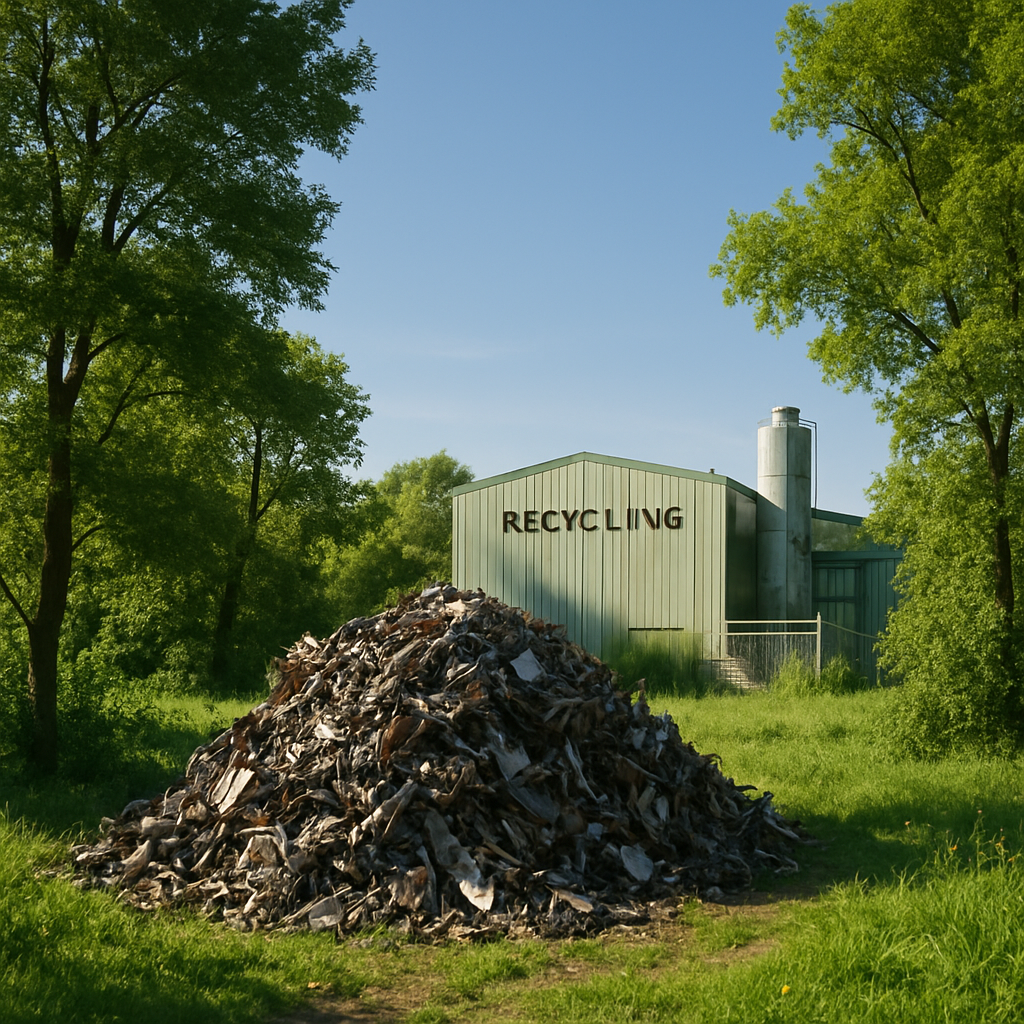
Scrap metal recycling stands as one of our most effective tools against environmental degradation. The process transforms potential waste into valuable resources while significantly reducing ecological impacts on multiple fronts.
Substantial Energy Conservation
The energy savings from metal recycling are substantial. Recycling aluminum conserves up to 95% of the energy required to produce new aluminum from bauxite ore, while steel recycling saves approximately 60-75% of the energy needed for primary production from iron ore.
These savings have real-world impacts. For every ton of steel recycled, enough energy is conserved to power 18 million homes for a full year. According to the Institute of Scrap Recycling Industries, metal recycling annually saves enough energy to power approximately 20 million households.
Energy conservation through recycling reduces pressure on power grids and decreases reliance on fossil fuels, creating a ripple effect of environmental benefits beyond immediate energy savings.
Reduction in Greenhouse Gas Emissions
Metal production from raw ore releases significant amounts of greenhouse gases, but recycling cuts these emissions dramatically. The Environmental Protection Agency reports that recycling one ton of steel prevents approximately 1,000 to 1,500 pounds of carbon dioxide from entering the atmosphere.
Studies show that recycling steel and aluminum can reduce greenhouse gas emissions by 86% and 92%, respectively. Overall, metal recycling reduces greenhouse gas emissions by 29 million tons of carbon dioxide annually—equivalent to removing 6.3 million cars from roads.
This reduction plays a crucial role in combating climate change. Every piece of scrap metal redirected to recycling directly contributes to lowering our collective carbon footprint and slowing global warming.
Conservation of Natural Resources
Metal extraction through mining damages environments, causing habitat destruction, soil erosion, and chemical contamination. Recycling one ton of steel conserves approximately 2,500 pounds of iron ore, 1,400 pounds of coal, and 120 pounds of limestone.
Metal resources are finite, and without conservation efforts, current reserves will eventually deplete. Recycling extends the lifecycle of these materials, reducing the need for new resource extraction from the Earth’s crust.
Conservation benefits extend to water resources as well. Metal recycling significantly reduces water consumption—recycling copper decreases water use by as much as 90% compared to primary production methods.
Reduction of Landfill Waste
Metals discarded in landfills take hundreds or thousands of years to decompose. Recycling prevents these materials from occupying valuable landfill space, which is increasingly scarce.
Metals in landfills pose long-term environmental risks, with many containing harmful chemicals that can leach into soil and groundwater. Recycling prevents these toxic substances from contaminating local water sources and ecosystems.
The reduction in landfill volume is significant, as metal waste accounts for a large portion of landfill materials by weight. Each ton of metal recycled represents cubic yards of landfill space preserved for non-recyclable waste.
Reduction of Mining Impact
Metal extraction involves extensive land disturbance that damages landscapes and ecosystems. Recycling scrap metal significantly reduces the need for mining operations, conserving natural habitats, preventing soil erosion, and maintaining biodiversity in mining-prone areas.
Mining operations often contaminate waterways with heavy metals and processing chemicals. By reducing mining activity through recycling, we help protect water quality in streams, rivers, and groundwater systems near extraction sites.
Communities near mining operations frequently experience air quality issues from dust and emissions. Recycling helps mitigate these impacts by decreasing demand for newly extracted materials, protecting both environmental and public health.
What Economic Advantages Do These Facilities Provide?
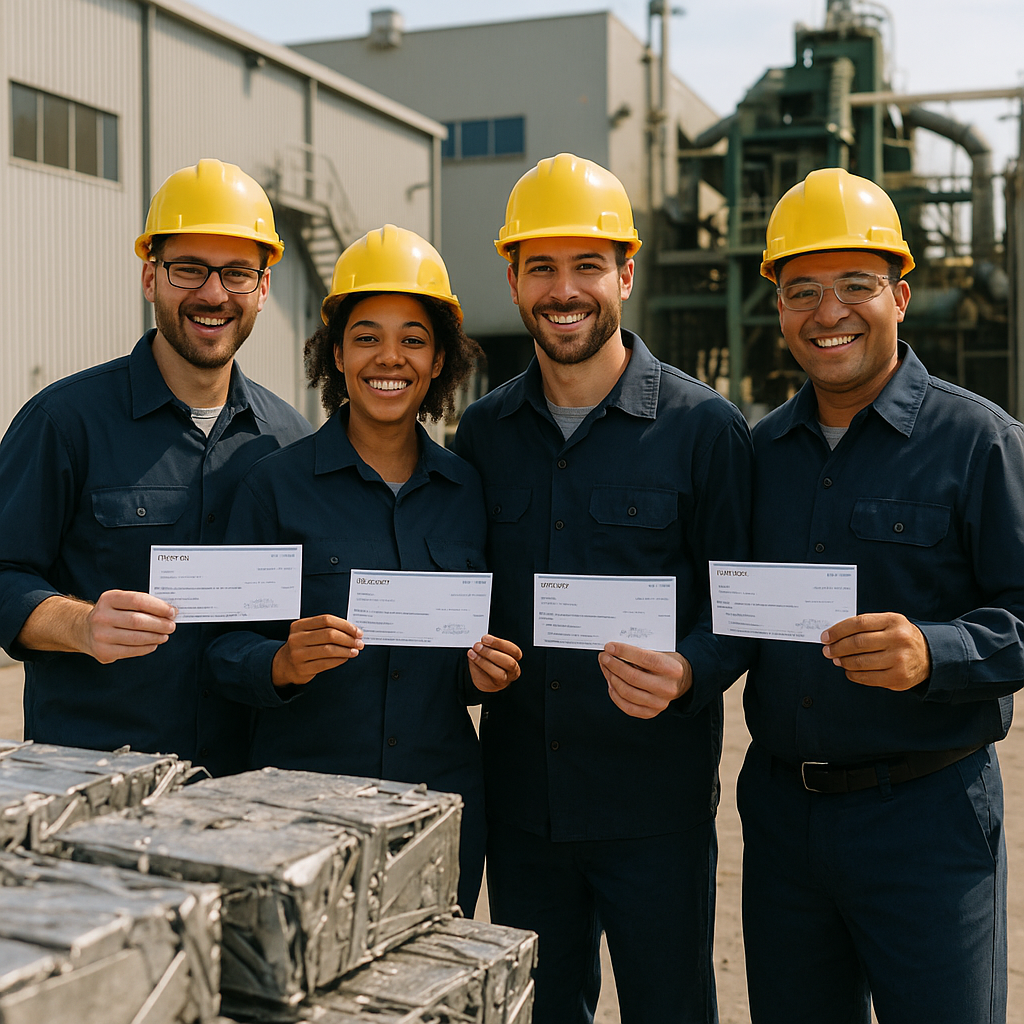
Scrap metal recycling facilities serve as powerful economic engines across the United States. According to the Institute of Scrap Recycling Industries, the industry generates approximately $117 billion in economic activity annually, creating a ripple effect that benefits communities, businesses, and local governments alike.
Job Creation and Employment Opportunities
The recycling sector is a significant employer nationwide, supporting over 530,000 jobs across various skill levels. These positions span the entire recycling supply chain, from collection specialists and truck drivers to processing facility workers and administrative staff.
These roles are not just temporary. Recycling facilities provide stable employment with competitive wages and benefits, valuable in both urban and rural areas. The industry maintains a steady growth rate of around 8% annually due to increasing demand for recycled materials across manufacturing sectors.
Employment benefits extend beyond the recycling facilities themselves. Ancillary businesses such as transportation companies, equipment manufacturers, and maintenance service providers gain substantial business from supporting recycling operations, creating additional indirect employment opportunities.
Tax Revenue and Public Services
The scrap metal recycling industry contributes an estimated $13.2 billion in tax revenue annually. This substantial fiscal impact includes federal, state, and local taxes that fund essential community services. Property taxes from recycling facilities help support schools, emergency services, and infrastructure projects.
Employees of these facilities generate additional tax revenue through income taxes. The broader economic activity stemming from recycling operations produces sales tax revenue that further strengthens public finances. Without these contributions, many municipalities would face budget shortfalls requiring service reductions or tax increases for residents.
Manufacturer Cost Savings
For manufacturers, recycled metals present a significant opportunity to reduce production costs. Using recycled materials instead of virgin resources delivers multiple financial benefits:
- Lower raw material expenses, as recycled metals typically cost less than newly mined materials
- Reduced energy costs, with aluminum recycling using 95% less energy than production from bauxite ore
- Steel manufacturing from recycled sources uses approximately 74% less energy than production from iron ore
- Decreased water consumption, with recycled metal processing using up to 40% less water
- Potential tax incentives and improved regulatory standing through sustainable manufacturing practices
These savings allow manufacturers to maintain more competitive pricing for their products, benefiting consumers through more affordable goods. The stabilized supply chain created by domestic recycling also shields manufacturers from global supply disruptions affecting virgin material sources.
Community Economic Development
Scrap metal recycling facilities act as economic development hubs within their communities. They purchase materials from local businesses and residents, keeping money circulating within the local economy. This creates a symbiotic business network where materials flow efficiently, and economic benefits are widely distributed.
The environmental advantages of recycling also translate into economic benefits for communities. By diverting metal from landfills, municipalities reduce waste management costs and extend the operational lifespan of disposal facilities. These savings can be redirected to other essential services or used to reduce the tax burden on residents.
Additionally, communities with strong recycling infrastructure often attract environmentally conscious businesses seeking locations with sustainability credentials. This creates a positive feedback loop that further strengthens local economic development and property values.
Conclusion: The Future of Scrap Metal Recycling Facilities
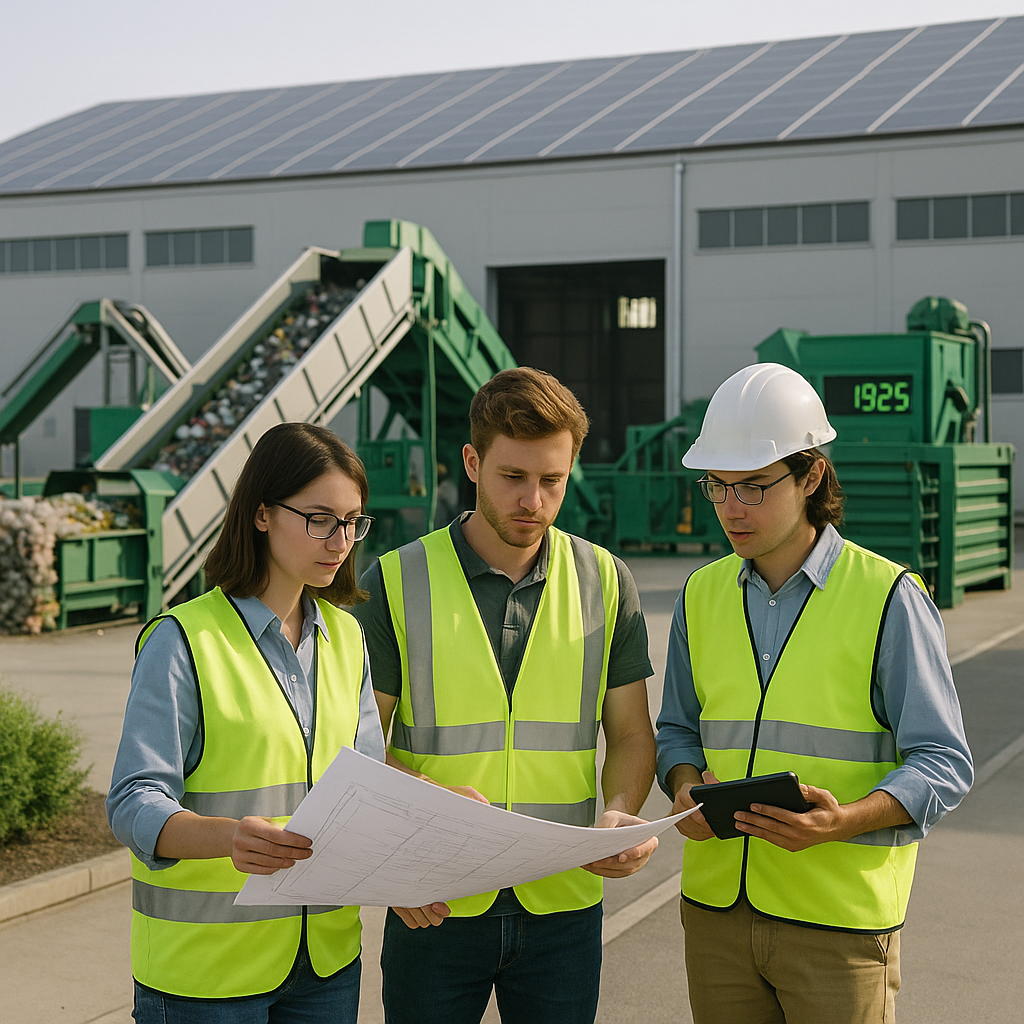
Scrap metal recycling facilities are at the forefront of the shift toward a circular economy, transforming waste into valuable resources through increasingly sophisticated processes. The industry is rapidly advancing with technological breakthroughs in AI-driven sorting, robotics, and specialized extraction methods for complex materials such as e-waste and lithium-ion batteries.
These advancements are not just technical achievements but are crucial steps toward global sustainability. By recovering valuable metals from discarded products, these facilities reduce the need for environmentally harmful mining operations while conserving energy and cutting carbon emissions. Research indicates that by 2040, recycling rare metals could decrease cumulative emissions from lithium, nickel, and cobalt production by 35%, underscoring the industry’s significant environmental impact.
For your metal recycling needs and to contribute to this essential sustainability effort, contact Okon Recycling at 214-717-4083. Our expertise in handling diverse metal streams and commitment to innovation make us an ideal partner in building a more resource-efficient future.
